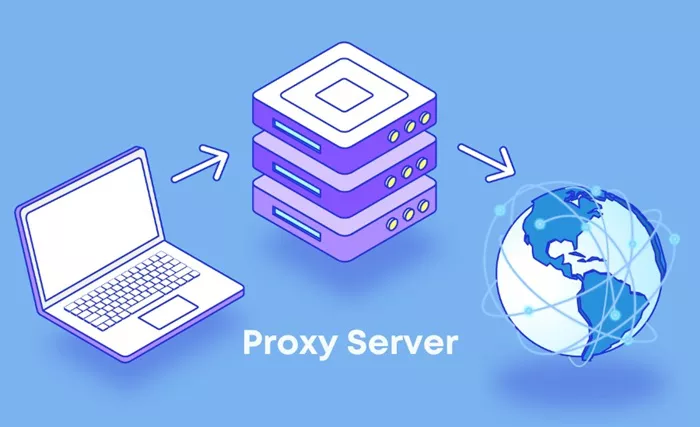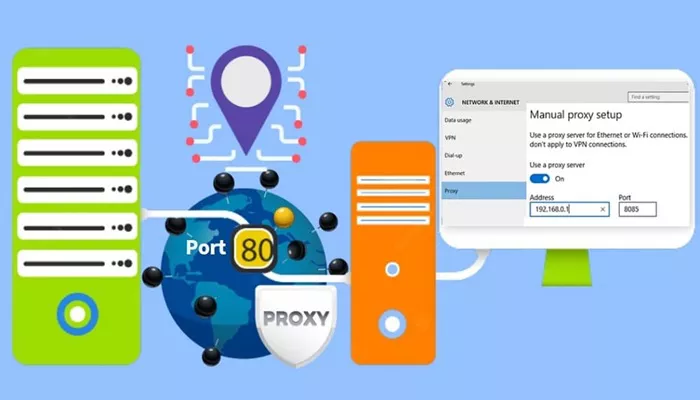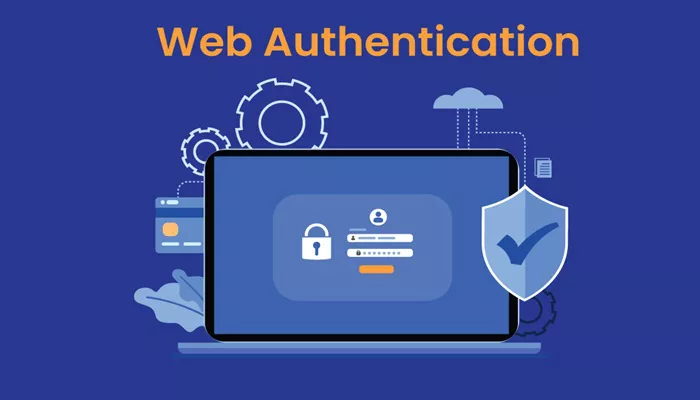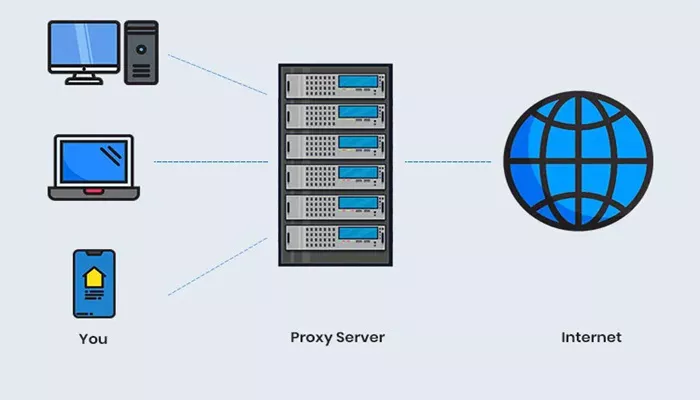Key Functions of Web Proxies
Web proxies serve as intermediaries between users and the internet, providing several key functions that enhance privacy, security, and accessibility. Here are the primary functions of web proxies:
1. Anonymity and Privacy
Hide IP Address: Proxies mask the user’s IP address, making it difficult for websites to track their real location or identity.
Bypass Tracking: By routing traffic through a proxy server, users can avoid being tracked by advertisers, websites, or other entities.
2. Access Control and Filtering
Content Filtering: Proxies can block access to specific websites or content, often used in workplaces or schools to restrict access to inappropriate or non-work-related sites.
Geolocation Bypass: Proxies allow users to access content restricted to certain geographic locations by routing traffic through servers in those regions.
3. Improved Performance
Caching: Proxies can cache frequently accessed web pages, reducing load times and bandwidth usage by serving cached content to users.
Load Balancing: Proxies can distribute network traffic across multiple servers, improving performance and reducing the risk of server overload.
4. Security
Malware Protection: Some proxies scan incoming data for malware and block malicious content before it reaches the user.
Encryption: Proxies can encrypt data transmitted between the user and the proxy server, enhancing security, especially on public Wi-Fi networks.
5. Monitoring and Logging
Activity Monitoring: Proxies can log user activity, providing administrators with insights into internet usage patterns and potential security threats.
Compliance: In corporate environments, proxies help ensure compliance with internet usage policies by monitoring and logging employee activity.
6. Bandwidth Savings
Data Compression: Some proxies compress data before sending it to the user, reducing bandwidth usage and speeding up load times.
Traffic Optimization: Proxies can optimize traffic by prioritizing certain types of data, ensuring efficient use of available bandwidth.
7. Bypassing Censorship
Access Restricted Content: In regions with internet censorship, proxies can provide access to blocked websites and services by routing traffic through servers in uncensored locations.
8. Testing and Development
Simulating Different Environments: Developers can use proxies to test how websites or applications perform in different geographic locations or network conditions.
9. Enhanced Privacy for Sensitive Transactions
Secure Browsing: Proxies can provide an additional layer of security for sensitive transactions, such as online banking or shopping, by masking the user’s IP address and encrypting data.
10. Scalability
Handling Multiple Requests: Proxies can manage multiple user requests simultaneously, making them useful for large organizations or websites with high traffic volumes.
By performing these functions, web proxies play a crucial role in enhancing internet security, privacy, and performance for both individual users and organizations.
Web Proxy Types and Uses
A web proxy is an intermediary server that processes requests between a client (user) and a destination server. Web proxies are commonly used for security, anonymity, caching, and content filtering. There are different types of web proxies, each serving a specific purpose.
1. Forward Proxy
A forward proxy acts as an intermediary between an internal network and the internet. It is typically used in corporate environments to control and monitor employee internet usage.
Key Features:
Hides the client’s IP address from the destination server.
Can enforce access restrictions.
Often used for caching and improving performance.
Helps in bypassing geo-restrictions.
Example Use Case:
A company restricts employees from accessing certain websites by routing all traffic through a forward proxy that blocks specific domains.
2. Reverse Proxy
A reverse proxy is placed in front of a web server and handles incoming requests from clients on behalf of the server.
Key Features:
Protects web servers by hiding their IP addresses.
Helps in load balancing by distributing traffic across multiple servers.
Enhances security by filtering out malicious requests.
Improves performance by caching frequently accessed content.
Example Use Case:
A content delivery network (CDN) like Cloudflare uses reverse proxies to cache and distribute web content, reducing the load on the origin server.
3. Transparent Proxy
A transparent proxy intercepts and redirects client requests without requiring user configuration. It does not modify the request or hide the client’s IP address.
Key Features:
Clients are unaware they are using a proxy.
Used for monitoring and filtering traffic.
Commonly implemented by ISPs, schools, and workplaces.
Example Use Case:
An ISP uses a transparent proxy to cache popular web pages, reducing bandwidth usage and improving speed for users.
4. Anonymous Proxy
An anonymous proxy hides the user’s IP address but identifies itself as a proxy to the destination server.
Key Features:
Provides some level of privacy by masking the user’s identity.
Used to bypass geo-restrictions and censorship.
Websites can detect it but may not identify the real user.
Example Use Case:
A user in a restricted country accesses blocked websites using an anonymous proxy.
5. High Anonymity Proxy (Elite Proxy)
A high anonymity proxy completely hides the user’s identity and does not reveal its proxy status.
Key Features:
Provides maximum privacy and anonymity.
Changes IP addresses periodically, making tracking difficult.
Often used by journalists, whistleblowers, and privacy-conscious users.
Example Use Case:
A journalist working in a high-surveillance country uses a Tor network proxy to communicate securely.
6. Distorting Proxy
A distorting proxy hides the real IP address but provides a false IP address to the destination server.
Key Features:
Offers privacy while still appearing as a proxy.
Can be used to bypass region-based restrictions.
Not as secure as an elite proxy.
Example Use Case:
A user in Europe wants to access a US-only website, so they use a distorting proxy that makes it appear as if they are connecting from the US.
7. SOCKS Proxy (SOCKS5)
A SOCKS proxy routes traffic at the transport layer (Layer 5 of the OSI model), supporting multiple types of traffic, including HTTP, FTP, and P2P.
Key Features:
Works with any type of traffic, not just web browsing.
Supports UDP and TCP connections.
More secure than regular HTTP proxies.
Example Use Case:
Gamers and torrent users use SOCKS5 proxies for faster and more secure connections while maintaining privacy.
8. CGI Proxy (Web Proxy)
A CGI proxy is a web-based service that allows users to enter a URL and browse the internet through the proxy server.
Key Features:
Does not require installation or configuration.
Can be easily blocked by websites.
Slower than other proxies due to web-based processing.
Example Use Case:
A student in a school with restricted internet access uses a CGI proxy website to access social media platforms.
9. Residential Proxy
A residential proxy routes traffic through real IP addresses assigned to residential users.
Key Features:
Harder to detect and block.
Provides better anonymity compared to datacenter proxies.
Often used for web scraping and market research.
Example Use Case:
A marketing company scrapes competitor prices using residential proxies to avoid detection.
10. Datacenter Proxy
A datacenter proxy is hosted in data centers and provides fast but less anonymous proxy services.
Key Features:
Offers high speed and low latency.
Easily detectable by websites.
Used for SEO monitoring, automation, and scraping.
Example Use Case:
A company uses datacenter proxies to track their website’s search engine rankings from different locations.
11. Rotating Proxy
A rotating proxy changes the user’s IP address frequently or after each request.
Key Features:
Improves anonymity and reduces blocking risks.
Ideal for web scraping and automation.
Provides access to multiple IP addresses.
Example Use Case:
A sneaker bot service uses rotating proxies to buy limited-edition sneakers without getting blocked.
12. Open Proxy
An open proxy is publicly accessible and allows anyone to use it without authentication.
Key Features:
Free to use but often slow and unreliable.
High risk of being monitored or compromised.
Used by casual users for bypassing restrictions.
Example Use Case:
A user accesses an open proxy list to bypass a geo-blocked website, unaware of potential security risks.
13. VPN (Virtual Private Network) Proxy
A VPN proxy encrypts the entire internet connection and routes it through a remote server.
Key Features:
Encrypts all data, not just web traffic.
More secure than traditional proxies.
Often requires a paid subscription.
Example Use Case:
A traveler in China uses a VPN proxy to access Google and YouTube, bypassing the Great Firewall.









